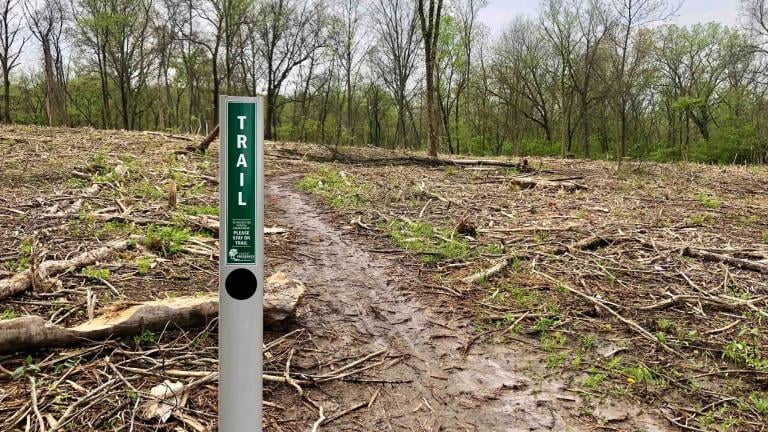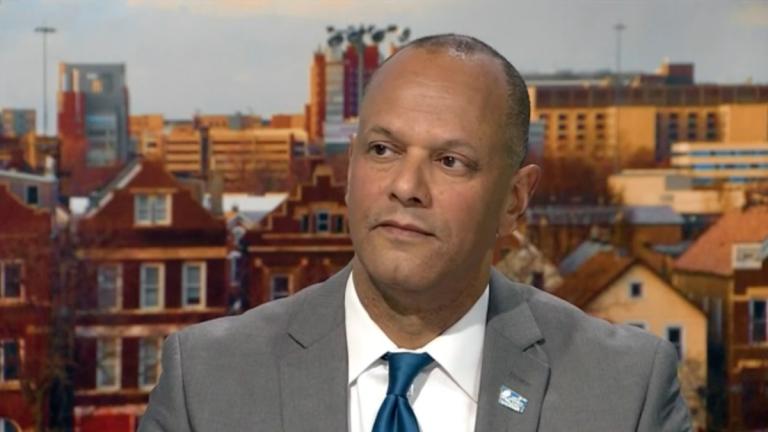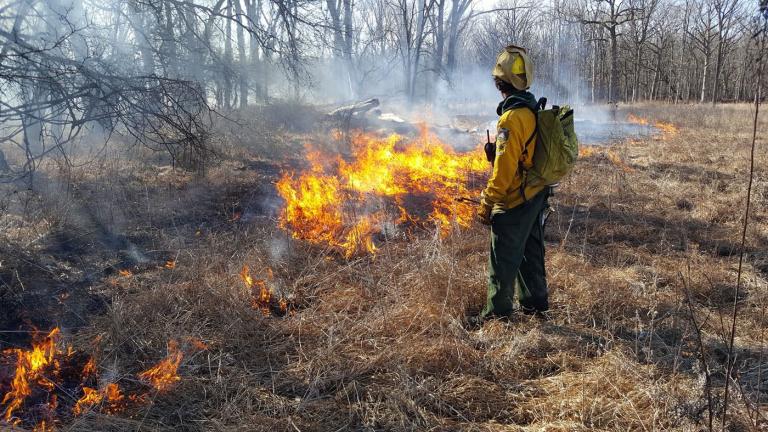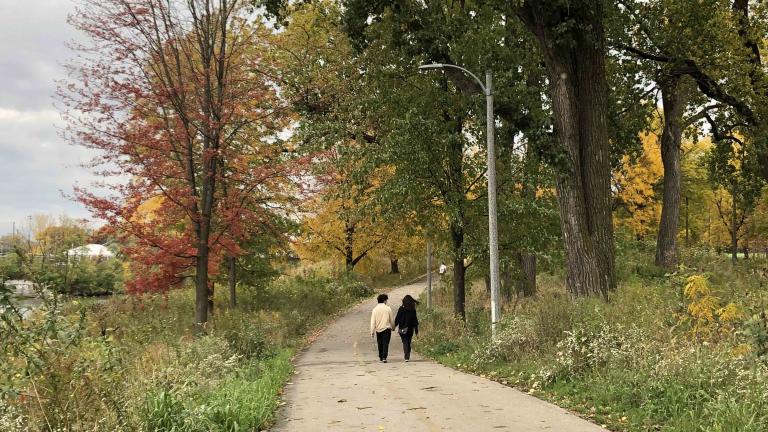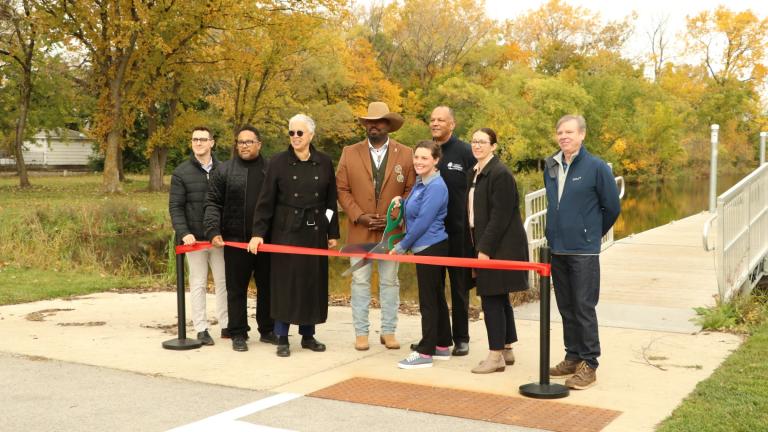At the southwestern edge of Cook County, near the junction of Interstate 80 and La Grange Road, sits an unpretentious 960-acre field. From the window of a passing car, it could easily be mistaken as the future home of yet another nondescript strip mall instead of the globally significant habitat it is.
Time to give Orland Grassland its due.
“Take a look at what you see, because a thousand acres of prairie is so rare and unusual,” said Pat Hayes, longtime volunteer site steward of the grassland. “Even if there were no animals or birds or other species, that space alone is remarkable.”
Grasslands — also called prairie, meadow, plains, lea, pampas, veld, heath — are some of the fastest vanishing ecosystems on the planet, in part because admirers like Hayes are nearly as rare and unusual as the habitat itself.
While mountains, canyons, cliffs, waterfalls, jungles and coastlines inspire awe, grasslands tend to inspire shrugs. What’s so special about grass?
“There’s way more than grass,” said Jim Herkert, former executive director of the Illinois Audubon Society. “There are rich, beautiful forbs (flowering plants) and this great show of cool pollinators. Listen to bobolinks sing on the wing, this really cool bird sounding like R2-D2. You’ve got to get into (a grassland), to look and listen and then look a little harder. Once you see it, you’ll be hooked.”
Though it shouldn’t matter whether humans appreciate the aesthetics of a landscape or not, it does. It matters because the more loved a landscape is, the more likely it is to be protected. And the protection of a place like Orland Grassland has make-or-break consequences for its non-human residents.
“We can coexist with nature if we give them the space,” said Hayes.
The proof is at Orland, she said. Even though it’s surrounded by development, the grassland is still plenty attractive to wildlife.
“They have this respite, and who cares if it’s La Grange Road,” said Hayes.
The full ecological value of Orland — onetime cropland acquired in the 1960s — is just beginning to come into focus as restoration efforts at the preserve have matured. Recent reports suggest it’s become a vital stronghold for threatened and endangered grassland birds, a bright bit of news that could point the way toward stemming the birds’ precipitous declines.
But these gains are tenuous. An incursion of an invasive species threatens the delicate ecological balance it’s taken decades to achieve at Orland. It’s a reminder, Hayes said, that when it comes to restoration, the word “done” doesn't apply.
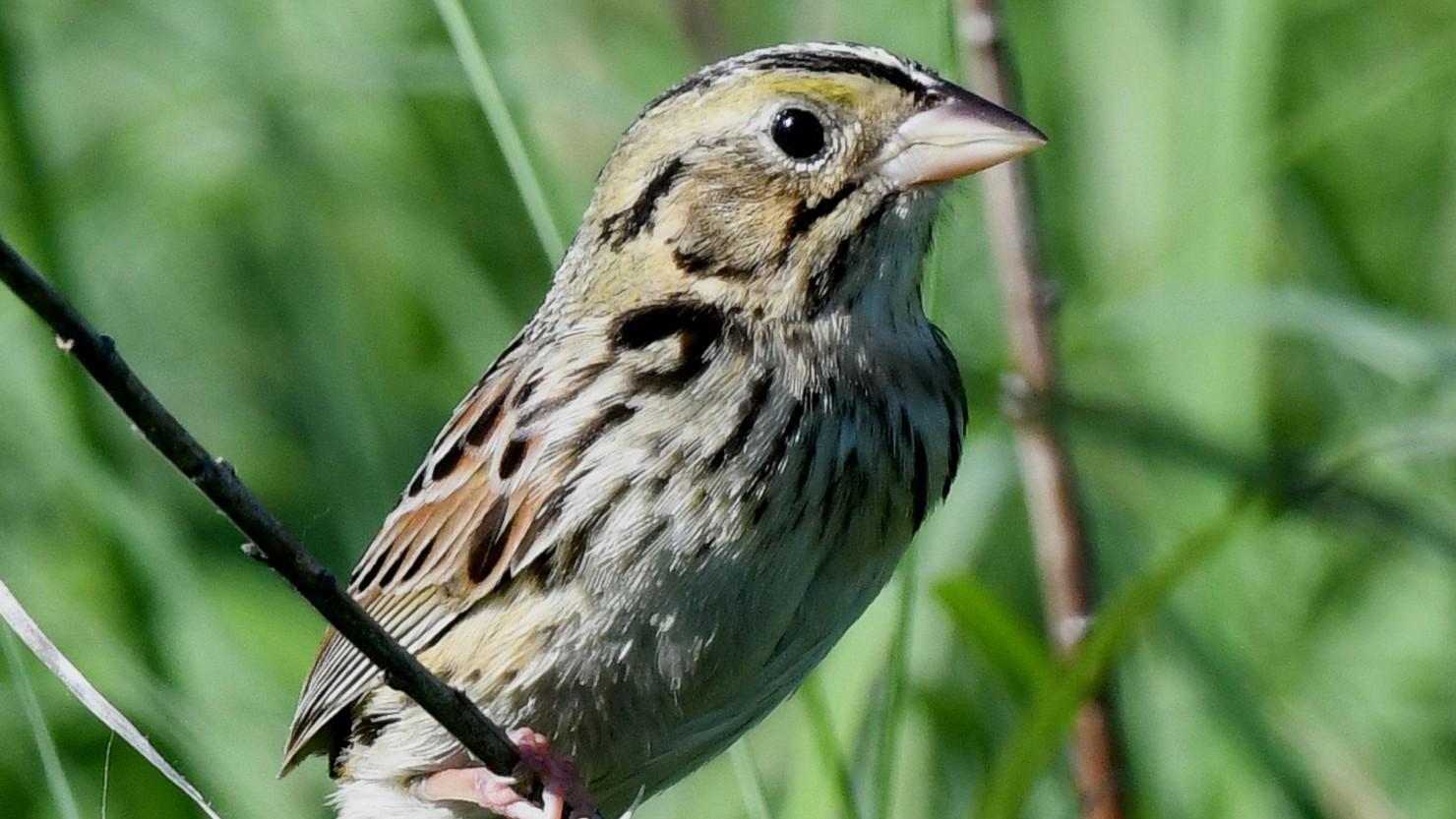 Henslow's sparrow. (Jim Hudgins / U.S. Fish and Wildlife Service Midwest Region)
Henslow's sparrow. (Jim Hudgins / U.S. Fish and Wildlife Service Midwest Region)
Various types of grasslands (or prairies) — tallgrass, shortgrass, mixed-grass, Western Gulf Coast, Californian, basin steppe — once covered roughly half of the United States. Illinois formed part of a 200-million-acre swath of tallgrass that stretched from Canada to Texas to Indiana. Herds of bison and elk roamed this vastness until settlers came.
Because tallgrass prairies harbored the most fertile soil of all the grasslands, they were the most vulnerable to cultivation. Roughly 90% of the country’s tallgrass is now gone, and much of what’s left is scattered like far-flung islands or at risk of conversion to cropland.
The Chicago region bucks that trend.
Orland Grassland, which is managed by the Forest Preserve District of Cook County, is one of a cluster of protected sites — along with Midewin National Tallgrass Prairie, Bartel Grassland and Tinley Creek Wetland, among others — that forms a network of high-quality habitat at large enough scale to support grassland wildlife, particularly birds.
In the last 30 years, the decrease of grassland birds has been steeper and more widespread than any other group, in large part due to habitat loss. But in northeastern Illinois, grassland species are holding steady if not increasing, said Herkert, whose resume also includes a stint as director of the office of resource conservation at the Illinois Department of Natural Resources.
Digging into data on the community science platform eBird, Herkert pulled all records for the Henslow’s sparrow, one of the rarer grassland species, with an estimated global breeding population of 410,000.
Cook County had the highest number of recorded sightings in the U.S., and looking at data from scores of protected sites in the broader Chicago wilderness region, Herkert found they accounted for 20% of all Henslow’s sparrow records globally.
There’s no other place in the world where such a sizeable number of the threatened sparrows is finding the grassland habitat it needs, he said, noting, “The larger the population you can support, the longer the species can persist.”
Critically, birds like the Henslow’s sparrow and the bobolink (97% of Illinois’ population is in northeastern Illinois), aren’t just encountering grasslands in the Chicago region, but protected grasslands.
“It’s hard to put into context,” Herkert said. “What you have there (in northeastern Illinois) is really unique — you can’t fall down without landing in a preserve.” By contrast, he said, there are counties in Illinois that have zero protected land.
“You can’t overstate the importance of our local forest preserves,” concurred Judy Pollock, president of Chicago Audubon Society. “We have really great site fidelity here,” she said, meaning the grassland birds return year after year.
As grassland continues to disappear elsewhere, species become even more reliant on these preserves. “The bigger you can make Orland, the better,” Herkert said.
In late 2022, the Forest Preserve District did just that, announcing the purchase of 15 acres of former farmland on 167th Street in Orland Park, across from the grassland’s main entrance.
“I believe I’ve wished so much for this over these many years, that I wished it right into reality,” said Hayes.
Iza Redlinski, deputy director of resource management for the district, said the 15-acre parcel — dubbed the Marley Creek buffer — is a piece of a strategic puzzle, adding contiguous open space and wetlands to the grassland’s existing wildlife corridor.
It also includes a segment of Marley Creek that sits upstream of and flows into Orland Grassland. With the property now in the Forest Preserves’ hands, the land is secure from development and the creek’s water quality is protected, Redlinski said.
For Hayes, the new addition’s value lies as much in its man-made structures as its natural features.
There’s a small house on the property that could be converted into a community hub or nature center, but the main attraction for Hayes is the farm’s pole barn — a utilitarian building designed to house tractors and other equipment.
“We could put our tools there,” Hayes said excitedly, and to understand why something as basic as a toolshed is a pipe dream come true, we need to rewind the story a bit.
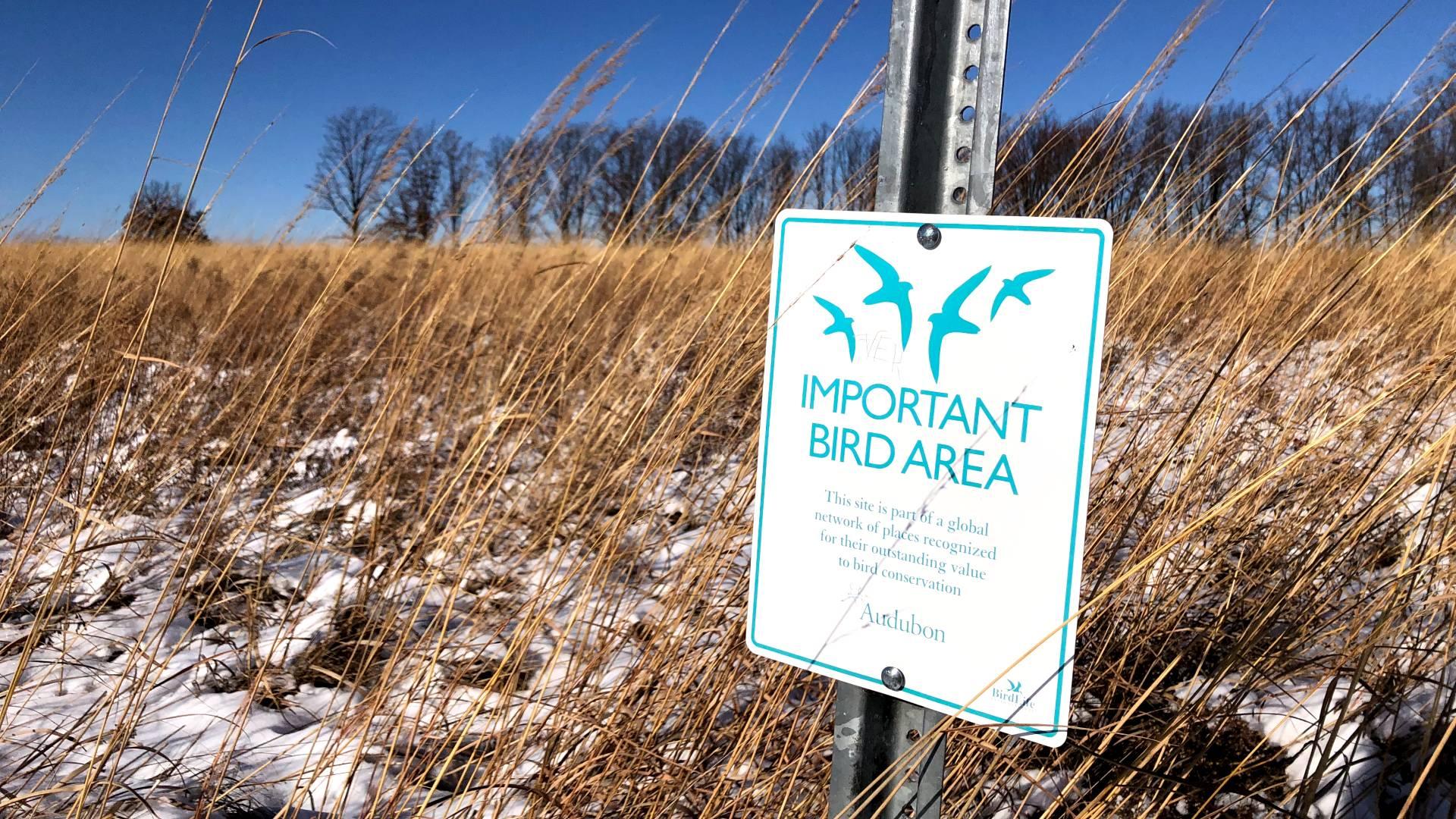 Grassland birds are in precipitous decline across the globe. Preserves like Orland Grassland provide vital habitat. (Patty Wetli / WTTW News)
Grassland birds are in precipitous decline across the globe. Preserves like Orland Grassland provide vital habitat. (Patty Wetli / WTTW News)
In the 1960s, when the Forest Preserve District first acquired Orland Grassland, which had been farmland, the first thing it did first was plant a bunch of trees. Because that’s what conservation meant at the time.
“They put trees everywhere,” said Hayes. “Putting shade on a prairie is like putting herbicide. It obliterates prairie.”
As knowledge evolved in the 1990s, researchers came to better understand the role of grasslands and the needs of grassland birds, including their preference for really large open spaces — “We’re talking hundreds of acres,” said Pollock — as nesting sites. For some species, the presence of so much as a single tree is enough to turn them off an area.
Not surprisingly, the bird population at Orland began to decline as its meadows shrank and forest took hold.
The trend worried the birding community, who raised the alarm. “These spaces really need advocates, and a lot of times the advocates will be birders,” Pollock said.
Soil samples were taken at Orland and revealed the land historically hadn’t supported woody species — meaning trees weren’t meant to be part of its ecosystem. To restore, not merely conserve Orland, the trees had to go.
Cutting down trees in a nature preserve is about as counter-intuitive as it gets. “We were very aware of that,” said Pollock, who was part of the team that communicated the plan to the public.
“We did a lot of selling,” she recalled, including hosting an open house. “We invited the whole community to come and talk about it.”
The message, of the need for really big open areas to support grassland birds, met with a surprisingly receptive audience, and “that was when there was a lot of pushback about restoration,” Pollock said.
In 2002, project partners including the U.S. Army Corps of Engineers, Openlands and Cook County Forest Preserves began planning for a holistic restoration of Orland Grassland.
Along with uprooting trees, the years-long process, which formally wrapped up in 2014, involved the removal of drainage tiles (remnants of the land’s agricultural use) to reestablish the site’s natural hydrology, the planting of tens of thousands of native plants and spreading more than 5,000 pounds of native seed.
“It’s just stunning to see this evolve, to see the success,” which has wowed everyone from visiting Cub Scout troops to ecosystem experts, said Hayes.
“Their jaws drop,” she said of the latter group. “They say, ‘It shouldn’t be this far along.’”
Most importantly, birds responded to the changes almost immediately, with the Army Corps reporting “exponential” population growth among species like the bobolink and meadowlark. But Hayes is quick to note that gains made at Orland Grassland by no means signal the job is finished.
“You can’t change a whole ecosystem in five years,” she said. “This is a journey that will take generations.”
And that brings us back to the toolshed.
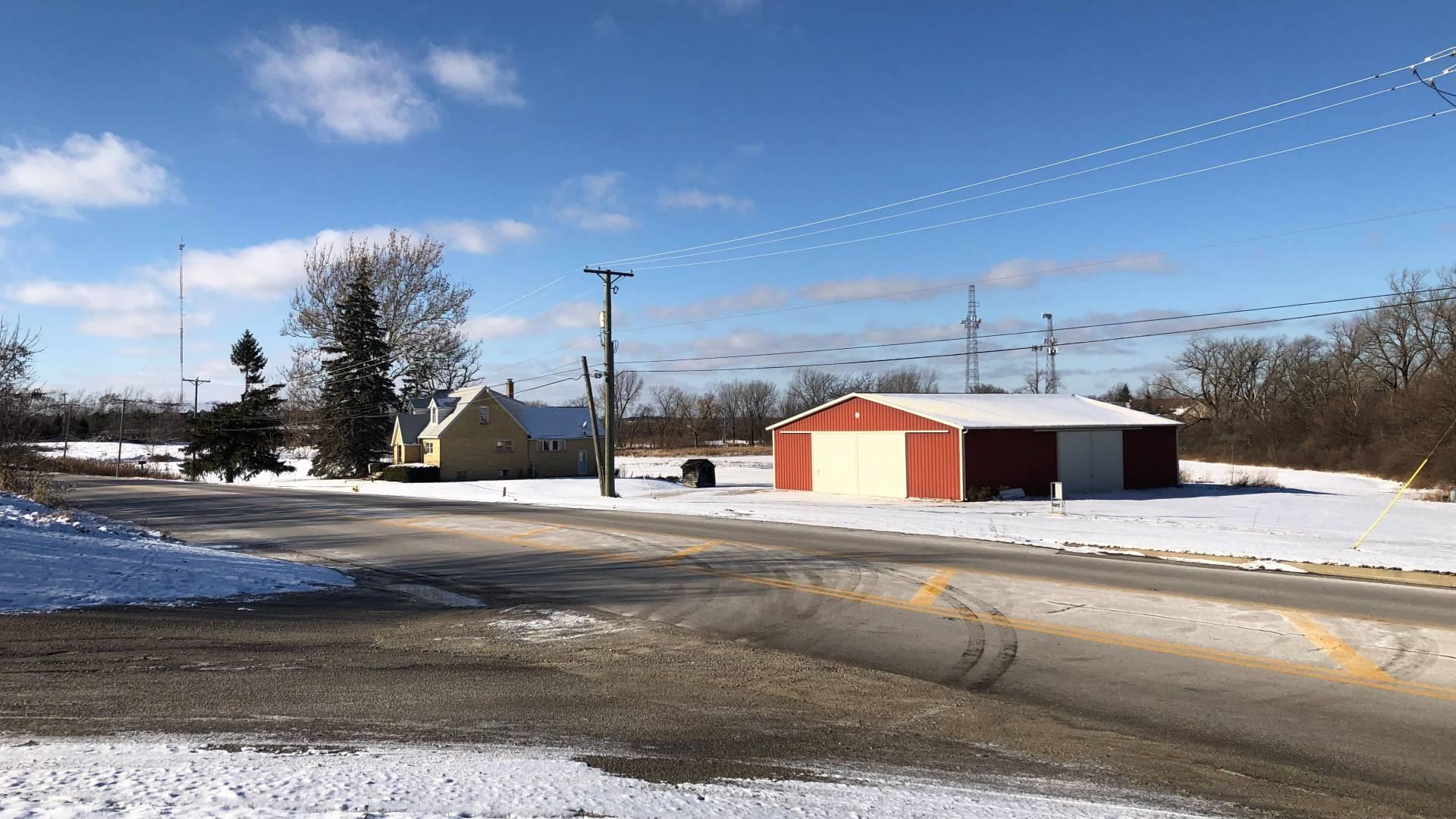 The Forest Preserve District of Cook County recently acquired 15 acres of land across the street from Orland Grassland. One of the main attractions: a storage shed for equipment and tools. (Patty Wetli / WTTW News)
Consider the process of building a house. A foundation is excavated, concrete is poured, exterior walls are erected. That’s the Army Corps’ role at Orland.
The Forest Preserve District of Cook County recently acquired 15 acres of land across the street from Orland Grassland. One of the main attractions: a storage shed for equipment and tools. (Patty Wetli / WTTW News)
Consider the process of building a house. A foundation is excavated, concrete is poured, exterior walls are erected. That’s the Army Corps’ role at Orland.
All the finishing touches, as well as ongoing upkeep — that’s the Forest Preserve District of Cook County and the Orland Grassland Volunteers, a community of stewards like Hughes who help maintain the site.
Regularly scheduled work days are held year-round to clear paths, collect seeds, monitor wildlife and plant health, and keep a watchful eye for anything out of the ordinary.
“They’re the boots on the ground,” said Redlinski.
For every one of those work days, Hayes has to schlep tools — loppers, saws, work gloves, etc. — from a storage container pod located miles from the grassland.
She looks at the pole barn and thinks of the time savings not only for herself but for the forest preserve staff and contractors who work at the grassland: the 30 to 60 minutes they spend in the morning gathering up gear off-site, and the 30 to 60 minutes lost at the end of every work day so this same gear can be returned.
“We’d get two extra hours of work a day if we could store equipment,” Hayes said.
With the grassland facing threat from a pernicious invasive species, there isn’t a moment to waste.
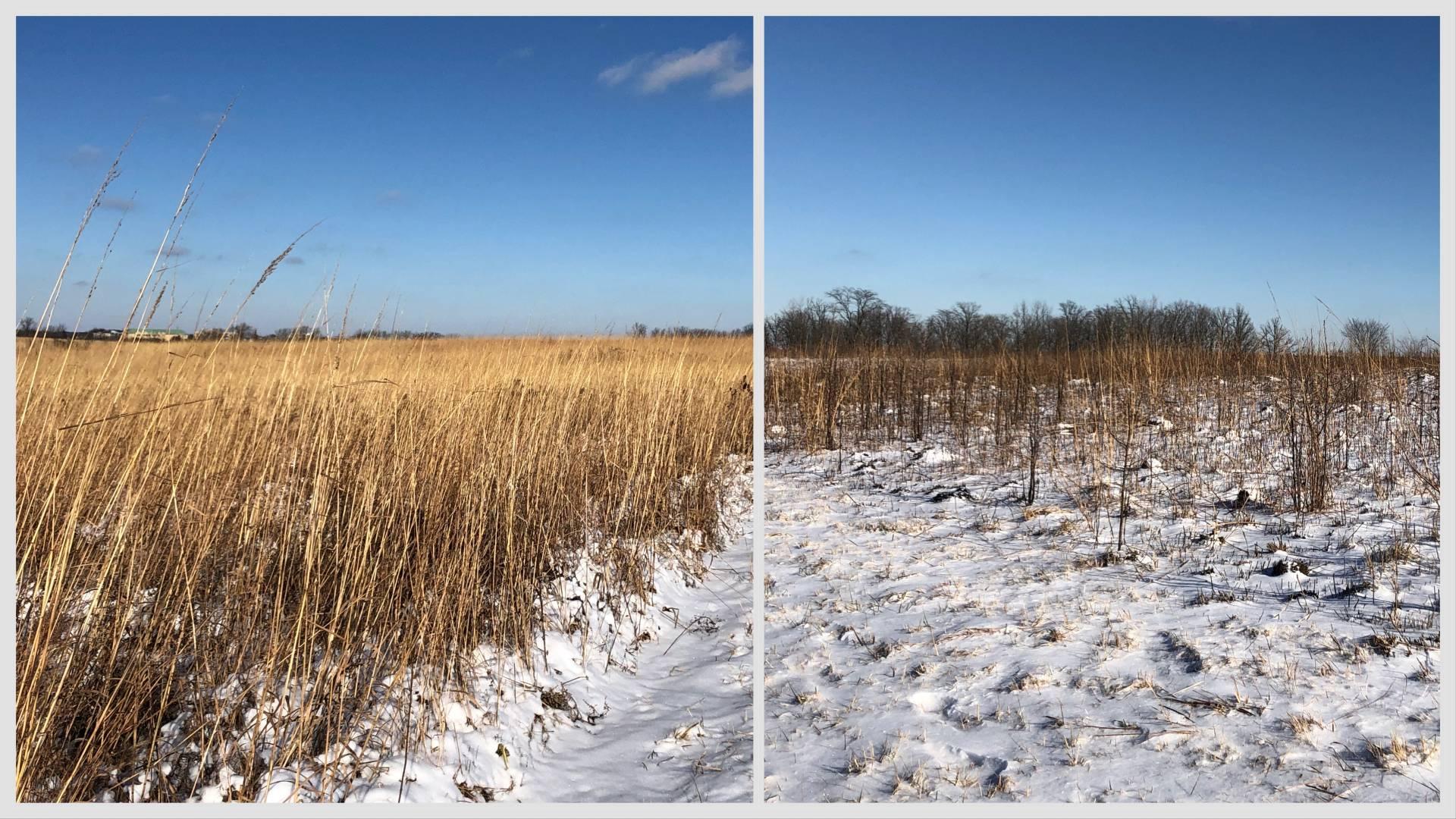 Healthy habitat at Orland Grassland on left, invasive Callery pear shoots on right. (Patty Wetli / WTTW News)
Healthy habitat at Orland Grassland on left, invasive Callery pear shoots on right. (Patty Wetli / WTTW News)
“Callery pear is going to kill this place,” said Hayes.
The popular ornamental tree — nearly as beloved for its tolerance of poor soil as for its showy white blossoms in spring — blankets subdivisions, office parks, churchyards and golf courses surrounding Orland Grassland.
Common birds eat the pear tree’s fruit and then plop the seeds, via their waste, at Orland.
“These trees are so aggressive, they’re so much worse than buckthorn,” said Hayes, referencing one of the region’s other least-wanted invasives. “In a matter of five years, we had sections that went from prime nesting for Henslow’s sparrow to forest. The density of it is just horrible.”
Callery pear spreads via rhizome — underground stems that grow horizontally, shooting up new growth that in some cases forms thickets.
“You get one tree, then the next year three, then 10, then 100,” said Hayes. “This threat is so fast and so furious, if we don’t get rid of the source, it will keep coming in.”
The specter of Callery pear and its potential to undo decades of work at Orland keeps Hayes up at night. “I’ve been trying to figure out how to protect Orland Grassland,” she said. “We’ve got lots of tears and sweat and joy in this.”
COVID set the cause back a bit, with volunteers unable to hold work days during the early part of the pandemic and invasives went unchecked.
“Then came a point when they said, ‘You can go out and do it individually,’ and we found a way to make it work. But there’s so much to be said for synergy when everybody is working together. Every extra hand, every extra heart magnifies exponentially,” said Hayes.
Audubon, which is keenly aware of Orland’s value as habitat, has acquired grants for the Conservancy to help knock back Callery pear shoots, an effort Hayes likened to playing whack-a-mole. “Those singletons are everywhere,” she said.
Short of throwing an impenetrable net over Orland, or the sort of protective force field that only exists in science fiction, holding Callery pear at bay will require constant vigilance, said Hayes.
In December, the Illinois Invasive Species Council announced it was assessing Callery pear for recommendation to the state’s list of noxious weeds.
It was welcome news to Hayes, but she also knows that the wheels of government turn slowly.
“Time is not our friend here at all,” she said. “We need action.”
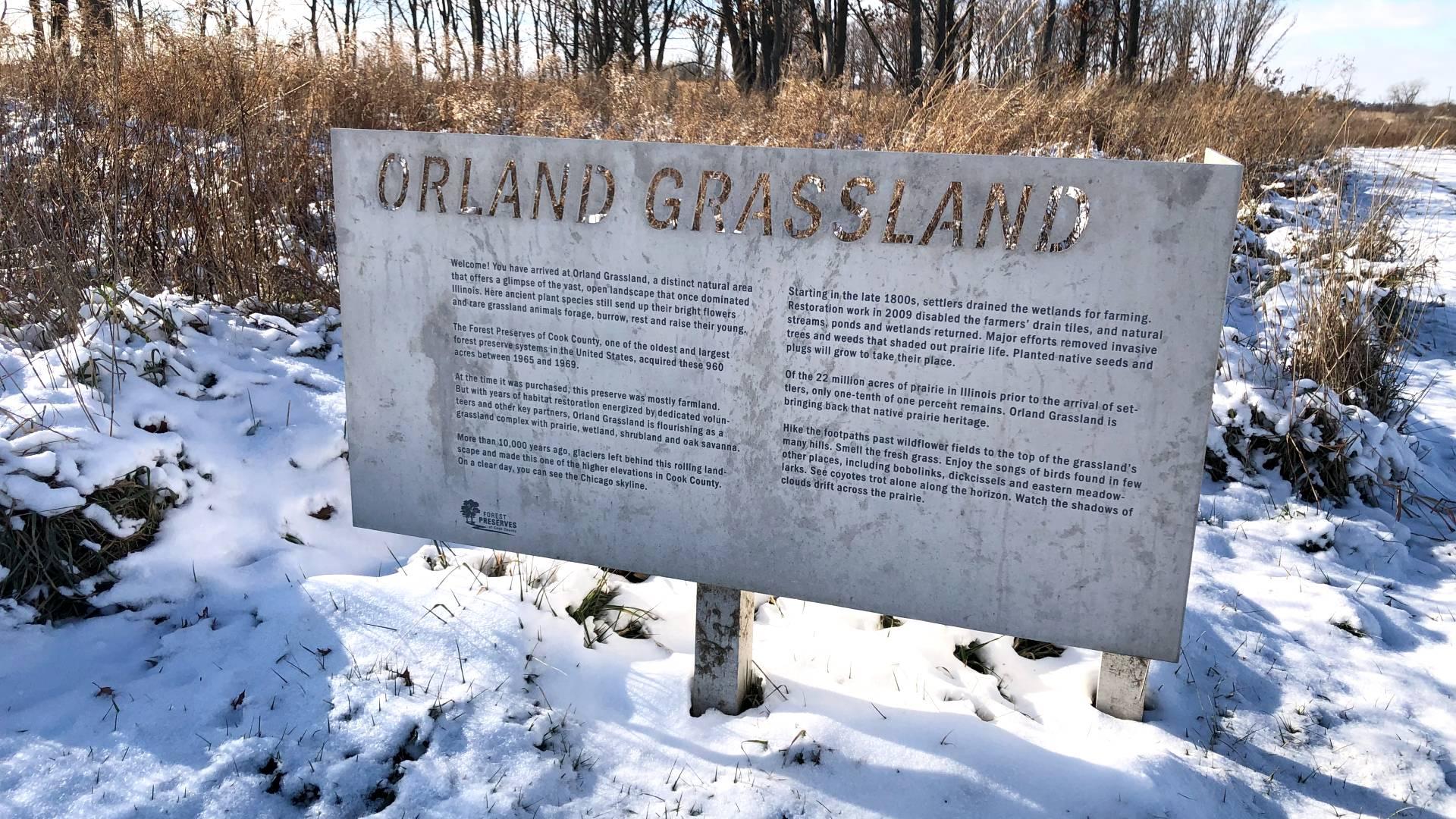 (Patty Wetli / WTTW News)
(Patty Wetli / WTTW News)
Twenty years ago, Hayes had never been to Orland Grassland. Mention it to people today, and plenty of folks still think it’s in Iowa, she said.
To understand what makes the place so special, Hayes encourages people to venture off the (somewhat controversial) paved bike trail that rings the grassland and take a step onto the footpaths (be sure to wear pants and bring along tick repellent).
This is how she first ventured into the grassland and experienced what she said felt “like a beckoning.”
Look for monarch butterflies. Listen for bobolinks. Watch an orb weaver spider spin its web around a grasshopper. Prepare to be greeted by crayfish, which have a habit of popping out of their mini volcano-shaped mudholes to startle visitors.
“He’ll stand up as tall as he can make himself and start snapping,” said Hayes, who compared the terrestrial crustacean to a chihuahua with a godzilla complex.
Prairies aren’t particularly kind to humans, she acknowledged. It’s always windier and either 10 degrees hotter in the summer or 10 degrees colder in the winter. But allow yourself to be drawn in, she said.
“There are places you walk where you see sky touching the earth, where you look over your shoulder and see the vastness,” said Hayes. “And you can imagine this as the gateway to the Grand Prairie.”
Contact Patty Wetli: @pattywetli | (773) 509-5623 | [email protected]

